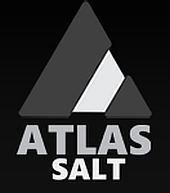 Newmont has aggressively surrounded Montana Gold’s project to the north of Long Canyon while Pilot Gold/Nevada Sunrise makes new discovery on trend to the south.
Newmont has aggressively surrounded Montana Gold’s project to the north of Long Canyon while Pilot Gold/Nevada Sunrise makes new discovery on trend to the south.
Why did Newmont stake the surrounding claims of Montana Gold Mining’s Golden Trail Project in 2011 right after they purchased Fronteer’s Long Canyon Project for $2.3 billion?
• Trading symbol MGM in Canada, GLRFF in the United States
• Outstanding Shares: 39 million shares
• Share price April 1, 2014 – $.05/share
• Market cap $2 million
• Location – Elko County, Nevada
• Trend – On trend with Newmont’s Long Canyon project and Pilot Gold/Nevada Sunrise Kinsley Mountain discovery.
• Claims – Have owned claims for nearly 10 years – Newmont aggressively staked surrounding claims in 2011 after their purchase of Long canyon for $2.3 billion
• High grade surface sampling results up to 28 g/t gold in grab samples, and 13.7 g/t gold and 105 g/t silver in continuous 5 foot trench samples over the main surface vein.
• Drill permits applied for and expected shortly, private placement being conducted
• Website: http://www.montanagoldmining.com/
• Contact: Ted Ellwood, President & CEO 1-519-964-2836 or [email protected]
Summary
One of the most exciting, high-grade gold discoveries in the world is playing out right now in eastern Nevada. The Pilot Gold/Nevada Sunrise JV at Kinsley Mountain continues to deliver exceptional drill results with the latest two step-out holes showing 10.5 g/t gold over 42.7 meters and 7.53 g/t gold over 53.3 meters in early March. Shareholders of both Pilot Gold and Nevada Sunrise have been richly rewarded since the first discovery hole was announced late in 2013.
One of the reasons for all of the excitement at the Kinsley discovery is the fact that the sediment hosted gold system has the same stratigraphy, structure, and mineralization style as the Long Canyon deposit. Kinsley is located 50 miles south and on trend with Long Canyon, which was purchased by Newmont from Fronteer Gold for $2.3 billion in 2011. Another gold project located on the other side of Long Canyon 50 miles north and on the northern book end of the trend is called Golden Trail. The mineralization at Golden Trail is within a thick sequence of Paleozoic carbonate rocks similar to the stratigraphic section in the Pequop Mountains to the south of the Golden Trail and the location of Newmont’s Long Canyon gold deposit. Newmont appears to have recognized this feature at Golden Trail and soon after they purchased Long Canyon for $2.3 billion aggressively staked the surrounding claims around Golden Trail.
A relatively unknown company, Montana Gold Mining Company (MGM in Canada, GLRFF in the US), with a market cap of $2 million owns the coveted Golden Trail project that Newmont has completely surrounded. Montana Gold has been waiting for the right time to have a “coming out” party since they have owned these claims for nearly 10 years and that time has now arrived. They are in the final stages of securing their drill permits and are also completing a private placement to see what the “northern bookend” of this exciting new high grade gold-enriched trend reveals.
Location
As the above map shows, Montana’s Golden Trail property is on trend and equal distance to the north from Newmont’s Long Canyon project as is the Kinsley Mountain discovery of the Pilot Gold/ Nevada Sunrise JV to the south. As the more well-known trends in Nevada such as the Cortez and Carlin trends have shown over the years, several gold projects have been discovered along these trends and there is a very good likelihood that additional gold discoveries will be made along the Pequop trend beyond the Newmont Long Canyon and Pilot Gold/Nevada Sunrise Kinsley Mountain discoveries.
History
Montana Gold’s predecessor on the Golden Trail Project initiated exploration in the area in the spring of 2004 and as a result of significant gold and pathfinder geochemistry, staked unpatented lode mining claims in 2005. More than $1.4 million has been spent on the project to date. After Montana Gold completed their initial rock sampling program, more extensive programs were undertaken in subsequent years consisting of geologic mapping, rock chip geochemical surveying, ground based gravity and magnetometer surveying, and four vertical holes drilled in 2007. The project is 100% owned by Montana Gold with no royalties and minimal annual claim costs (approximately $2,000/year).
The Golden Trail claim block consists of 16 contiguous unpatented mining claims totaling about 320 acres. The Golden Trail claim block lies on the eastern margin of the historically productive Contact Mining District, but there is little reported exploration in the Golden Trail area. The Contact district produced significant copper, gold, silver, zinc, lead, and tungsten. There are numerous historic shafts, adits, and other workings on the Golden Trail Project but no recorded production
Recent Activity
After Newmont was successful in their purchase of the Long Canyon project from Fronteer Gold for $2.3 billion in 2011, they immediately staked the surrounding land around Montana’s Golden Trail claim block in order to secure the most prospective ground along the trend with similarities to the Long Canyon project.
The management of Montana Gold are aware of Newmont’s obvious interest and view the aggressive staking by Newmont around the Golden Trail Project as a ringing endorsement of the project merits. Management intends to continue developing this project on its own but may consider future discussion with Newmont or other parties.
In addition to the high grade gold sampling results on surface, perhaps one of the reasons for Newmont’s interest in the project is the major gravity anomaly that underlies the Golden Trail claim block (see survey at right).
On surface, the largest identified vein, the Golden Trail Vein (GTV), is over 1,200 meters long, and has an associated alteration zone that averages about 30 meters wide. Gold values above 20 ppb are common within the zone and several samples above 9 g/t gold have been taken in the central GTV area including one rock chip sample of decalcified limestone that contained over 28 g/t gold. Continuous 5 foot trench samples have returned 13.7 g/tgold with 36.2 g/t silver in one 5 foot trench and 3.49 g/t gold with 105 g/t silver in a second 5 foot trench
Coming Out Party
Recently, two press releases have been issued by the company with the restart of exploration on the project. In October, they announced the start of their work program at Golden Trail:
Montana Gold to start work program at Golden Trail
2013-10-16 08:35 ET – News Release
MONTANA GOLD RECEIVES FINANCING
Montana Gold Mining Company Inc. has received $170,000 toward a non-brokered private placement financing that will be completed through the issuance of units priced at five cents per unit. Each unit will comprise one common share and one warrant to purchase an additional common share at 10 cents during the first year, and then at 15 cents during the second year and 20 cents during the third year after the closing of the placement. The company may accept additional subscriptions toward the private placement financing.
A surface sampling and geochemistry program will now commence at the company’s 100-per-cent-owned Golden Trail project, located in Elko county, Nevada. This program is expected to take about one month to complete and is being conducted by Dr. Richard Capps, PhD., author of a National Instrument 43-101 report filed on this property and available on SEDAR or the company’s website.
Overview of the Golden Trail project
Golden Trail is situated on the Pequop trend (also called the Eastern Nevada gold trend), a recently identified gold trend in northeastern Nevada that in 2011 saw Newmont Mining Co. take over the former owner of the Long Canyon property, 52 miles south of Golden Trail for a reported $2.3-billion (U.S.). Subsequent to Newmont’s acquisition of Long Canyon, Newmont staked 211 mineral claims totalling about 4,300 acres that completely surround the company’s Golden Trail project, which comprises 16 contiguous mining claims that total about 320 acres.
Hydrothermal precious metal vein and mineralized skarn are the primary exploration targets at the Golden Trail project and sediment-hosted gold is a potential target at depth. The Golden Trail mineralization is centred on a broad zone of thermal metamorphism and hydrothermal/metasomatic alteration. The alteration/mineralization is defined by rock-chip geochemistry, 8,100 feet of phase one drilling, gravity and magnetic surveys, petrographic and X-ray diffraction studies, and geologic mapping. The zone includes decalcified and silica replaced Paleozoic limestone and calcareous sandstone. Gold and base metal mineralization is controlled and localized along broad northwest-trending dilational zones containing numerous northwest-striking, high-angle gold-bearing veins and adjacent replacement zones all centred within a northwest-striking calcsilicate skarn. Preskarn host rocks include Paleozoic limestone, siltstone, chert, sandstone and conglomerate.
The largest identified vein, the Golden Trail vein (GTV), is over 1,200 metres long and has an associated alteration zone that averages about 30 m wide. Gold values above 20 parts per billion are common within the zone and several samples above nine grams have been taken in the central GTV area, including one rock-chip sample of decalcified limestone containing over 28 grams gold.
The surface sampling program now commencing involves channel and soil samples along the Golden Trail vein and primarily in the vicinity of planned drill locations. Subject to financing, drilling is planned to follow the surface program either later this year or in 2014.
Then just a few weeks ago, they announced the results of the work program at Golden Trail. Notice the underlined section on the following page showing gold mineralization similar to Long Canyon:
Montana Gold samples 13.7 g/t Au, 105 g/t Ag at Golden
2014-03-17 09:09 ET – News Release
MONTANA GOLD COMPLETES SURFACE GEOCHEMICAL SURVEYS AT THE GOLDEN TRAIL PROJECT, ELKO COUNTY, NEVADA
Montana Gold Mining Company Inc. has completed surface rock-chip line sampling and both ionic leach and conventional soil geochemical
surveys on the company’s Golden Trail project, Elko county, Nevada, with encouraging results.
The purpose of these surveys was to demonstrate the repeatability and continuity of historic rock chip samples, better understand the structural
and lithological controls, and to conduct a pilot soil survey to determine the usefulness of soil sampling at Golden Trail for determining the
continuity of gold mineralization in areas of poor outcrop.
Previous surface work at Golden Trail comprises detailed geologic mapping, ground-based gravity and magnetic surveys, and over 900 surface
rock-chip (grab) samples and has traced the largest identified surface vein, the Golden Trail vein, to over 1,200 metres long, with an associated
alteration zone that averages about 30 metres wide. Gold values above 20 parts per billion are common within the zone, and several samples
above nine grams have been taken in the central GTV area, including one rock chip sample of decalcified limestone that contained over 28 grams
gold.
Highlights of the recent surface geochemical survey programs include:
Thirteen point seven grams per tonne gold and 36.2 grams per tonne silver were returned in one five-foot continuous trench sample of a siliceous feox-rich limestone breccia.
Three point forty-nine grams per tonne gold with 105 grams per tonne silver were returned in a another five-foot continuous trench sample of a jasperoid and limestone contact material.
Of 44 continuous five-foot line trench samples taken in various locations on the property for better structural and lithologic understanding, only two returned no gold or silver. Of the five-foot continuous line samples, 20 per cent contained greater than 0.1 gram per tonne gold, and 50 per cent contained greater than 1.0 gram per tonne of silver.
Both the ionic leach and conventional soil geochemical surveys correspond to the same northwestern trend as the gold values encountered in the previous surface rock-chip sampling.
These soil analyses correspond with previous surface rock-chip sampling in showing that gold, silver, arsenic, antimony and titanium are intimately associated at Golden Trail, which is a typical association for sediment-hosted gold deposits in the Great basin and along the Pequop trend (eastern Nevada gold trend).
The geochemical surveys will aid in drill targeting, and the relationship between the ionic leach data and an underlying gravity anomaly is of particular interest.
Gold values up to 13.7 grams per tonne and silver values up to 105 grams per tonne in the five-foot-long (1.5-metre) continuous line samples show good correlation with the historic sampling. These results show that the northwestern trend of the soil anomalies corresponds with the trend of the historic rock chip assays and pathfinder geochemistry in this area and that higher assay values are along a gently dipping contact between jasperoid and a decalcified marble dissolution breccia. Beneath the jasperoid, lower but consistent gold values are within vuggy ocherous weakly siliceous dissolution collapse breccia. The soil lines demonstrate continuity of the mineralized trend in areas without outcrop. The jasperoid and dissolution collapse breccia are controlled by nearly horizontal bedding planes in the marble and thin banded subvertical veins, probable joint and fracture fillings cutting across the breccia in several outcrops. These relationships suggest that the gold mineralization is relatively late and postdates the thermal metamorphism and calc-silicate skarn formation at Golden Trail.
Several elements were anomalous in both conventional and ionic leach soil analyses, and these are silver, arsenic, cadmium, copper, mercury, lead, antimony, tin and zinc. These elements probably reflect higher concentrations of secondary minerals present at the surface that are derived from primary sulphides at depth.
The anomalous geochemical patterns associated with the hydronium and rare-earth-element concentrations are likely double-peak or rabbit-ear responses typical of actively oxidizing bedrock sulphides beneath the water table. The anomalous gold and pathfinder responses that are adjacent to the H3O anomalies and along the northwest-trending Golden Trail vein may be shallower anomalies above the water table. The relationship between these responses and a significant gravity anomaly underlying the Golden Trail is of particular interest.
A report prepared by Dr. Richard Capps, PhD, describing the recent work noted similarities between gold mineralization at Golden Trail and recently discovered gold deposits in the Pequop range, Elko county, Nevada, including:
Mineralization at Golden Trail is within a thick sequence of Paleozoic carbonate rocks similar to the stratigraphic section in the Pequop Mountains to the south of the Golden Trail and the location of Newmont Mining Company’s Long Canyon gold deposit.
These Paleozoic strata are strongly and complexly deformed by mid-Mesozoic orogenic (compressive) tectonics and subsequent metamorphism at deeper crustal levels.
Tertiary extension and accompanying magmatism produced focused pathways such as normal faults, detachment zones and repositories for subsequent, regionally mostly Eocene, mineralizing solutions, forming large locally mineralized issolution cavities and siliceous breccias.
The intimate association of gold, silver, arsenic, antimony and thallium at Golden Trail and at the Long Canyon deposit is a typical association for sediment-hosted gold deposits in the Great basin (Carlin deposits), and their deposition is considered cogenetic (arsenian pyrite, arsenopyrite and marcasite co-deposited with gold).
The Golden Trail is 100 per cent owned by the company and is composed of 16 continuous mining claims that total about 320 acres. The Golden Trail is situated on the Pequop trend (also called the eastern Nevada gold trend), a recently identified gold trend in northeastern Nevada that in 2011 saw Newmont Mining Company take over the former owner of the Long Canyon property, 52 miles south of Golden Trail, for a reported $2.3-billion (U.S.). Subsequent to Newmont’s acquisition of Long Canyon, Newmont staked 211 mineral claims totalling about 4,300 acres that completely surround the company’s Golden Trail property.
Next Steps
• One of the final requirements for securing the drill permits from Nevada’s BLM (Bureau of Land Management) was the completion of a cultural review of the area. This review was successfully completed a few weeks ago without any findings so the drill permits should be forthcoming within the next 30 days.
• Management is also in the final stages of completing their recently announced private placement. Currently there are 39 million shares outstanding with directors, associates and euro funds holding over 65% of the outstanding shares so the share structure is tight.
• In an effort to begin increasing the company’s visibility in the market, management is on the waiting list to exhibit at the Elko County Mining Expo on June 5th-6th and is looking at other marketing opportunities.
• The current share price of Montana Gold (as shown below) has not yet reflected the increased attention that the Pilot Gold/Nevada Sunrise JV is drawing due to their high grade gold results over significant widths at Kinsley Mountain nor Montana’s upcoming drill program and therefore, in my opinion, represents an attractive entry point at these levels.
http://www.montanagoldmining.com/news/
































